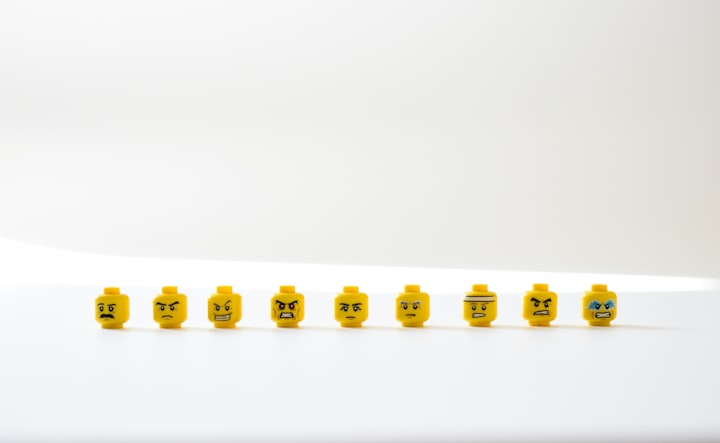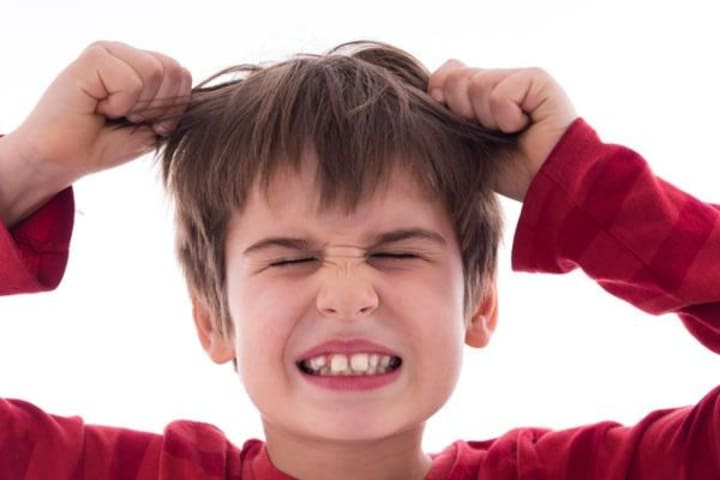
Key Points
There are 3 characteristics of an angry child that can affect the child's school year and family life.
Maintaining good communication with an irritable child can mean the difference between ignoring the problem and helping to intervene.
Angry children and adults do not present their best ideas; therefore, they often make things worse.

Angry children exhibit common characteristics, some of which may be worth a closer look to investigate what is going on.
3 traits describe angry, irritable behavior. Here, I will highlight some of the factors that influence the school year.
Anger hinders logic
When a child frequently misunderstands the problems he faces and refuses help, he gets caught up in emotional reasoning or sensory thinking. Logic hardly works at this point, and the child is often unable to think, unwilling to talk, and running like a wild horse with emotions. Sadly, angry children and adolescents are often unable to analyze the problem.
Helpful interventions: Show that talking about the problem is opening the door to problem-solving. Use analogies that relate to the child's interests (favorite sport or hobby) so she pays attention and gets involved. Teachers can do this in the classroom, and parents can do it when helping with homework or during those "teachable moments" when discipline helps teach correct behavior rather than just pointing out inappropriate behavior.
Gently evoke circular thinking or avoidance, especially responsibility, if the child changes his mind to fit the conclusions he has formed in his head. Teaching to admit one's mistakes, acknowledge them and clean up the mess (literally and metaphorically) is important!
Blaming others
This leads to another anger trait, the tendency to blame others. "He hit me first," "It's not my fault the teacher didn't tell me," or "The center doesn't have any good books, so I won't read tonight." These all sound like excuses from elementary school children.
If indeed the child is the victim of bullying, her anger may be justified, but it is in no way an excuse to replicate the despicable behavior. Frustration, however, can lead to anger that permeates sarcasm, criticism, disrespectful tones, or passive-aggressive behavior that is more than any words can say.
Useful interventions: Use what we call (good communication) to teach the difference between excuses (poor choices) and explanations. Blame often surfaces, and an angry child (or adult) will launch an attack to push others away so he feels better and then concludes that the person being pushed aside is the source of the pain.
The blame is often shifted to those who can provide help. Channel that anger to remove blame. Calmly correct faulty thinking. This can be done by saying, "Well, even if it's the other child's fault, how can we help you handle the situation better in the future?"
Continue the attack
Blame coincides with another anger characteristic - attacking the person rather than solving the problem.
Going on the offensive provides sustenance for one's irritation and is usually easier than rolling up one's sleeves to resolve a rift or problem. Aggressive behavior heightens one's insecurities, draws attention to oneself, turns away aid and helpers, and wrongly assumes one is in the right. We see this when angry people see innocent others as the villains of their story.
Remember, angry kids are not good at reasoning; they believe that if they are angry, they must be right. It's an 'I may not win, but at least you won't either attitude.
Aggression can also be part of an angry person's manipulation. Kids, in particular, are savvy enough to know that if they accuse a teacher or principal of racial slurs or misconduct, things will escalate. This can be passive-aggressive in return.
Useful interventions: Teach that there are no villains in the stories he has. Everyone is responsible for his or her actions. Admitting mistakes or lapses shows strength of character. Countless solutions also provide options.
Adults are powerful role models. If you don't want to be manipulated by your children, then don't manipulate yourself in this way without thinking about it.
This is rampant in divorce scenarios and sadly, parents go the adversarial route and the only people who win are the lawyers and their bank accounts. Alternative Dispute Resolution (aka Collaborative Divorce or Mediation) avoids this scenario.
Don't blame others, but acknowledge your role in the argument. Work through the various solutions step by step, working with the people you are interacting with, not against or opposing.
Brainstorm, think outside the box creatively, and role-play when you're really in a bind. All of this empowers your child to face conflict and solve problems, thus quelling the urge to attack.
Irritable, irritable children grow into cranky, short-tempered adults. Counseling and therapy, as well as addressing the characteristics between these sessions, can lead to happiness rather than misery.
About the Creator
Fra Tusha
stay hungry, stay foolish.






Comments
There are no comments for this story
Be the first to respond and start the conversation.